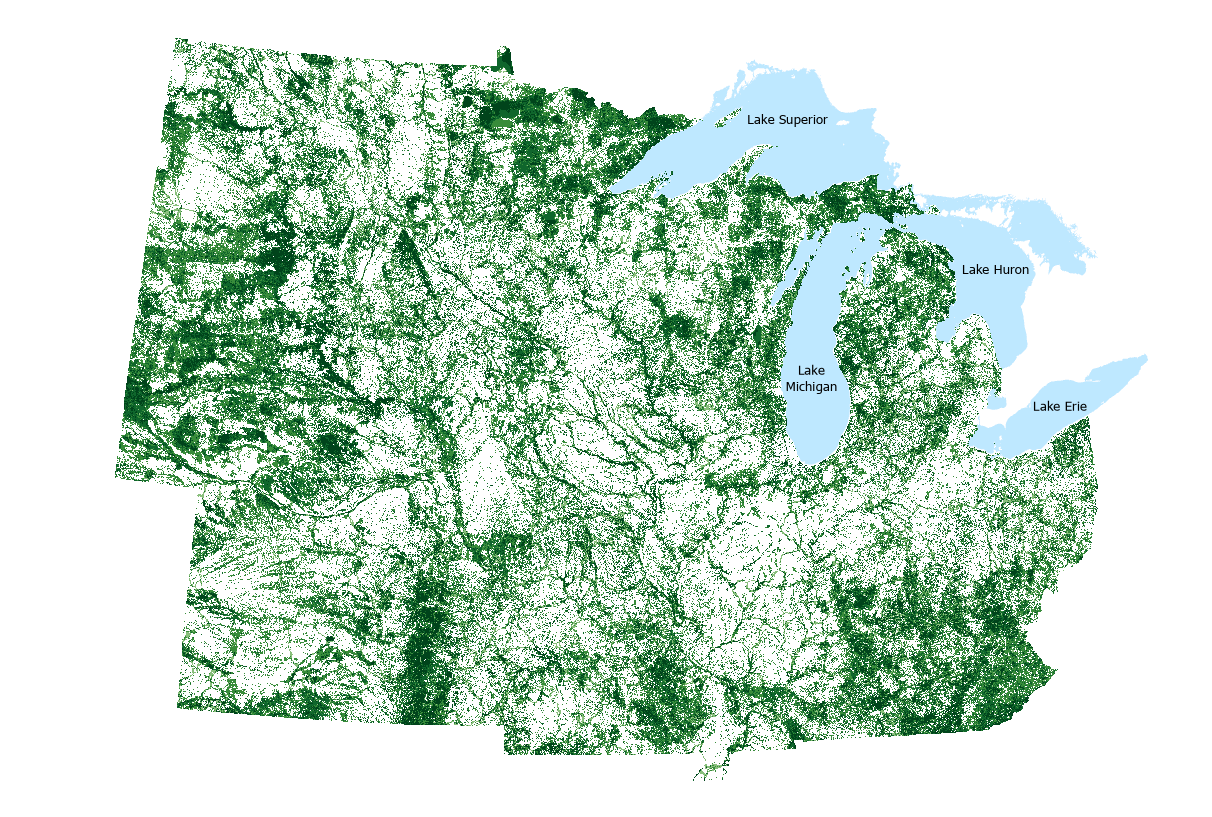An updated Midwest Conservation Blueprint - Turning regional planning into on-the-ground success

While working on collaborative landscape conservation, I find it easy to lose myself in the big picture. As a Spatial Ecologist with the Midwest Landscape Initiative, I spend a lot of time co-developing tools, aligning strategies, and ultimately, trying to protect habitat. It’s a hard job to collaboratively develop solutions for healthy, functioning ecosystems in the Midwest, which is why I’m excited to announce that the 2024 update of the Midwest Conservation Blueprint is here! The blueprint is a catalyst for turning regional conservation planning into local, on-the-ground action.
The blueprint is a basemap that identifies priority areas for conservation and connectivity in the Midwest. As of September 2024, the blueprint has impacted more than $47 million, 54,000 acres, and 800 river miles for a thriving network of lands, waters, and communities. Specifically, our partners have used this tool to focus and align work across organizations, attract and direct funding for conservation, and connect to new partners and audiences.
Making an on-the-ground impact
Supporting local users of the Midwest Conservation Blueprint is my favorite part of work. The Midwest Landscape Initiative covers a very wide geography, and the many conservation organizations across each of our 13 states come with diverse interests, needs, and conservation goals. I can’t be everywhere at once, but the blueprint helps me support all these people. Helping users gives me a window into some of the conservation successes happening in the region and makes me feel more closely tied to our mission. The enthusiasm and connection to the land I see from people continues to motivate and inspire me.
Blueprint users are seeing advantages too. Whether it’s helping folks prioritize where they work or augmenting a grant application by showing the regional benefits of a project, the blueprint has assisted users across the Midwest to reach their conservation goals.
One such example is in the Upper Minnesota River watershed, where South Dakota Game, Fish, and Parks, the Upper Minnesota River Watershed District, and the Sisseton Wahpeton Oyate have come together to remove aquatic barriers and enhance habitat for over 40 native fish and freshwater mussel species. Partners used the blueprint as a tool for highlighting to funders the regional conservation significance of their target site, plus the potential social benefits to nearby vulnerable communities.
The group’s application resulted in a $3.3 million grant award from the Bipartisan Infrastructure Law Fish Passage Program. Jason Jungwirth, a Senior Biologist with South Dakota Game, Fish, and Parks, reflected that the blueprint and the assistance of the MLI “went a long way to help us develop a solid grant application.”
Making the blueprint better
A crucial part of supporting user success is listening to the needs of people who interact with the blueprint. Based on comments we received through the blueprint’s feedback application, we’ve been able to incorporate more than 250 responses to improve our data sources, methodology, and overall user experience. In addition to our online feedback application, blueprint improvement is supported by the Midwest Landscape Initiative’s Habitat Working Group. So far, over 65 individuals from across more than 20 organizations have directly participated in blueprint development as members of this working group.
This process of continual improvement allows us to regularly get the input needed to improve the blueprint, but more importantly, build and maintain the relationships necessary to enact change on the landscape. If you’d like to share feedback on the blueprint or get more involved by joining the Habitat Working Group, please reach out to me at rachael_carlberg@fws.gov to get started!
To learn more about how the Midwest Landscape Initiative is working with partners across the Midwest, visit our MLI in Action StoryMap. To get assistance using the Midwest Conservation Blueprint, visit our Conservation Support Services webpage.